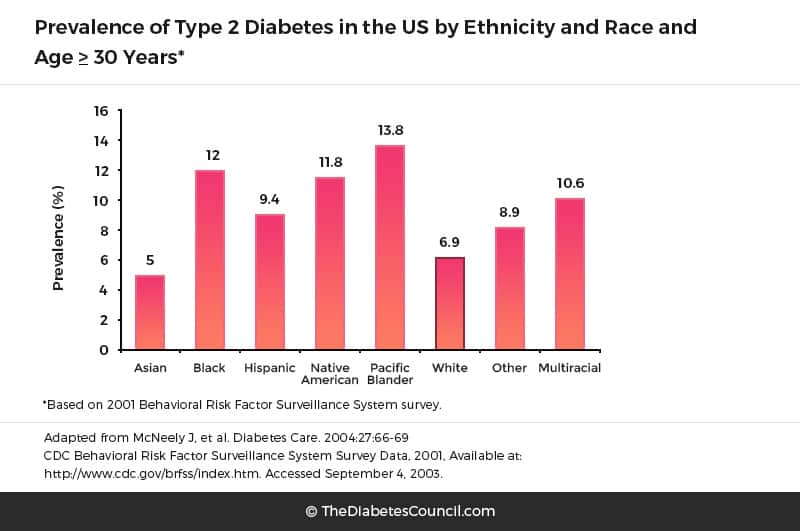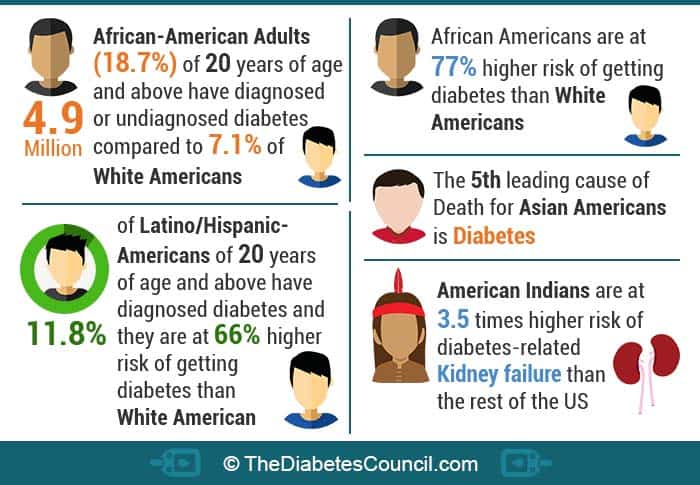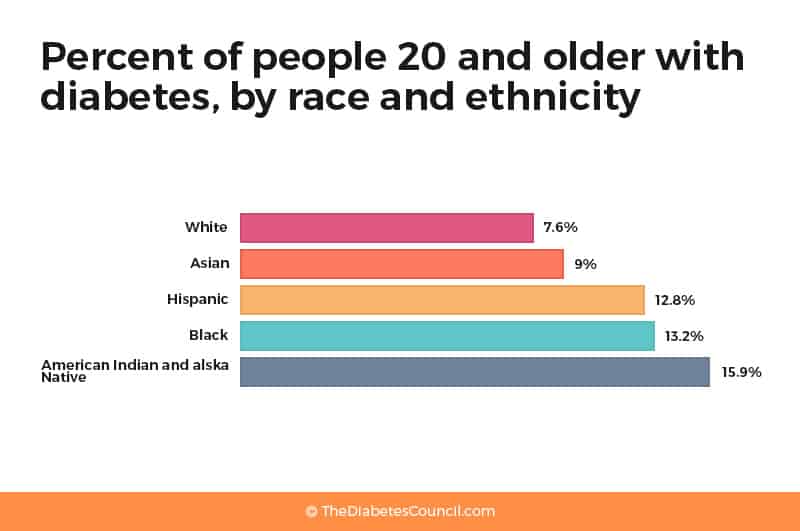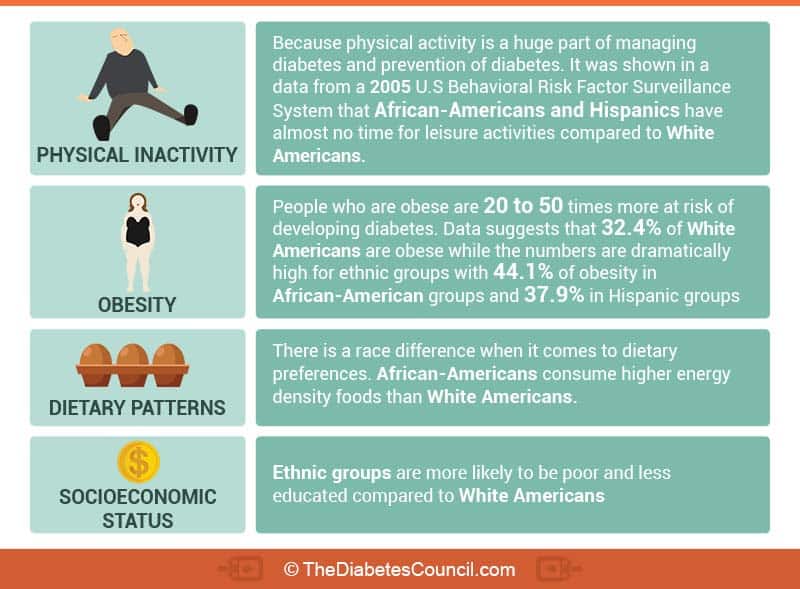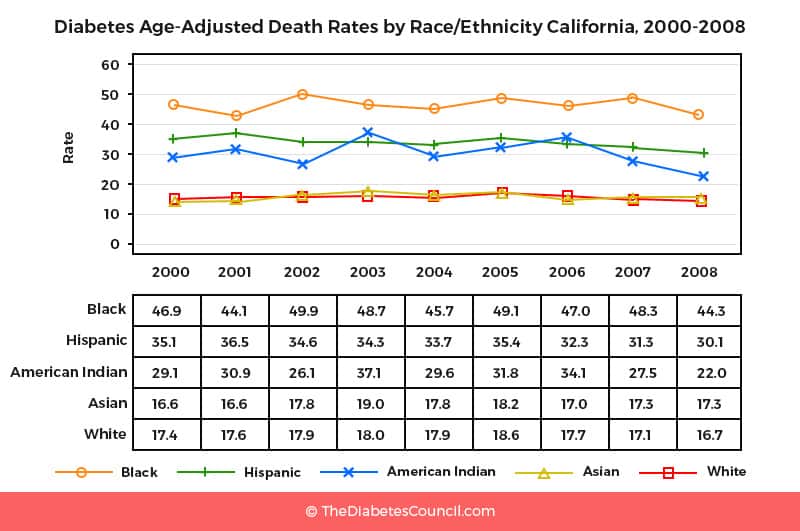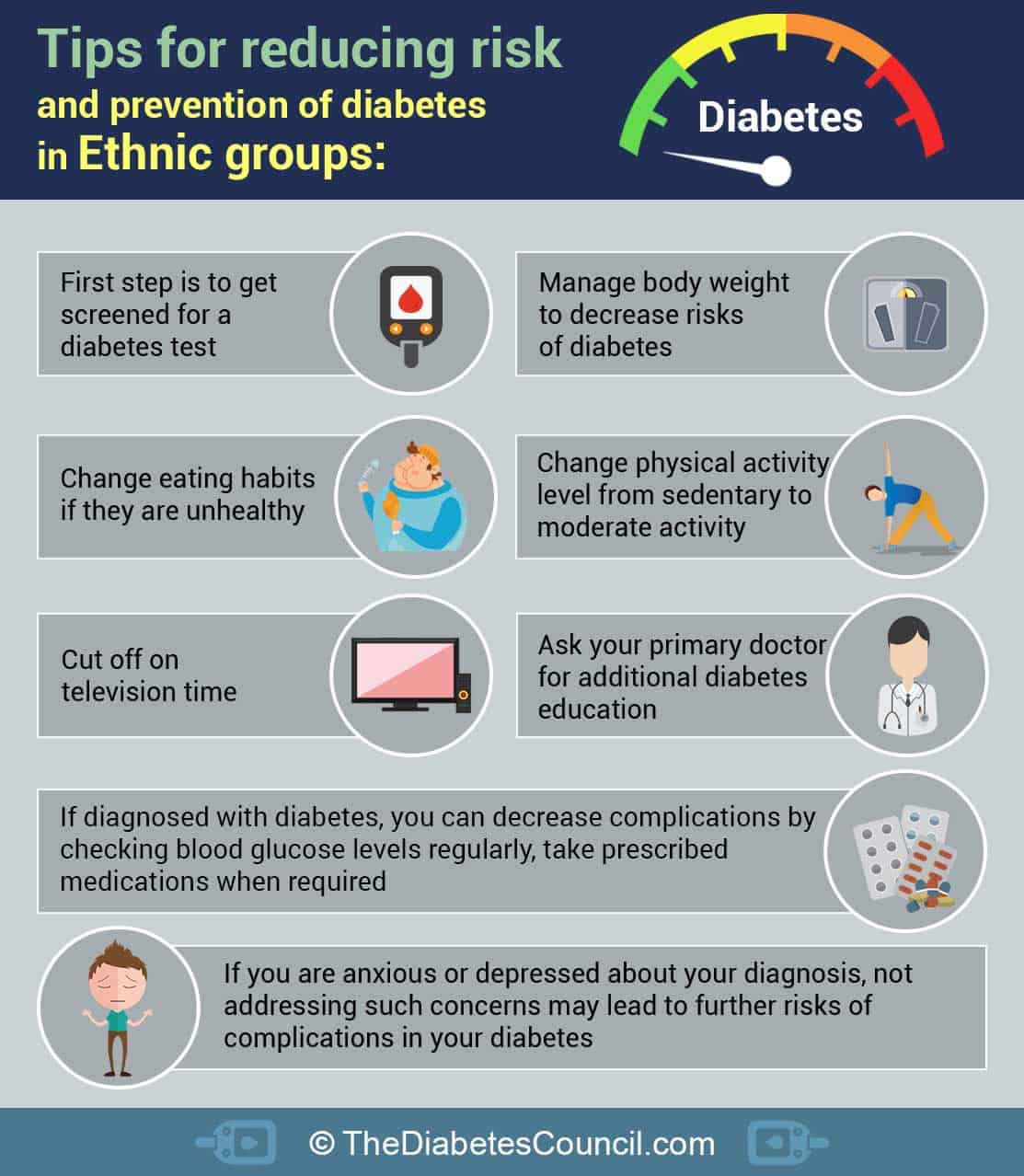A few days ago, a colleague and I were talking about diabetes and how its diagnosis has increased in great numbers in the past few years. We are all aware of the role that a healthy and active lifestyle, tight blood glucose controls and effective management plays in a person with diabetes' life. However, as we continued discussing the many aspects of diabetes in today's time, we paused a second to ponder over whether race or ethnicity plays any role in the diagnosis of diabetes in a person, if so, why would that be?
And further, how can it be prevented?
I began digging to find out what I can learn about diabetes and the role that race and ethnicity has to diabetes. I had many questions:
- Is this something that has been studied by experts in the field?
- How is race associated to diabetes and its diagnosis?
- What puts a certain group at higher risk and more susceptible to getting diabetes over the other group?
- How can high risk populations prevent further diagnosis to happen?
To my wonder, a lot of studies have been conducted, research have been done and lots written on this particular topic. Today, we would like to share these important findings and studies with our readers. We will also explore the many ways that advocacy groups are looking to bring health equity to all races and ethnicity.
For more informational diabetes articles read the following:
Contents
Some important numbers
According to the American Diabetes Association, African Americans, Mexican Americans, American Indians, Asian Americans are some of the ethnic groups who are at a higher risk of developing type 2 diabetes and the complications that come with diabetes such as limb amputations, retinopathy and kidney failure.1
Here are some rather disturbing numbers when it comes to Diabetes epidemic in racial and ethnic minorities2:
- 4.9 million African-American adults (18.7%) of 20 years of age and above have diagnosed or undiagnosed diabetes compared to 7.1% of White Americans
- African Americans are at 77% higher risk of getting diabetes than white Americans
- 11.8% of Latino/Hispanic-Americans of 20 years of age and above have diagnosed diabetes and they are at 66% higher risk of getting diabetes than white American
- The 5th leading cause of death for Asian Americans is diabetes
- American Indians are at 3.5 times higher risk of diabetes-related kidney failure than the rest of the US
The cause
One may wonder why there are such disparities in numbers between ethnic groups and white Americans. In a study posted on Agency for Healthcare Research and Quality's website, different ethnic and racial groups have barriers between them and the health care quality they receive. Some of the common barriers for Hispanics with diabetes include:
- economic burden,
- a distrust of insulin therapy,
- using traditional remedies instead,
- putting the needs of other family members over their health.3
In a study conducted by University of Michigan researcher Michele Heisler, 1,901 African-Americans, Hispanic Americans and white diabetes patients aged 55 or older were sent home blood sugar control test kits. The home taken tests determined previous suggested studies that the average hemoglobin A1c value is higher in ethnic minorities than it is in white American diabetes patients.
Poor numbers in A1c is considered to be a sign of unmanaged or poorly managed diabetes. Dr. Hesiler and colleagues were able to base their findings on a number of reasons4:
- White diabetes Americans are better at taking their prescribed diabetes medications than African-Americans
- Hispanic patients experience more emotional distress than white diabetes patients when it comes to diabetes
It is also important to look at the insurance coverage of those who have diabetes to understand the cause of rising numbers in diabetes for ethnic and racial groups.
About 22.8% of African-Americans are uninsured, whereas in 35.75 of Hispanics are uninsured compared to 12.6% of white Americans who are insured.5 This means that there are higher numbers of African-Americans and Hispanic-Americans who are uninsured and are less likely to receive appropriate diabetes education and care. Without the diabetes education, high risk populations may not know when to do regular glucose monitoring, what to do in the event of a low sugar incident and when to go for check-ups for complications that come with having diabetes.
Such health disparities are often a result of the socio-economic, environmental, poor standard of care, lack of health education and poor understanding of disease management within the high risk groups. Such groups are also exposed to poor dietary options and live in neighborhoods with lack of safe places for physical activity.6
While studies show us numbers in diabetes cases within minorities based on external factors, there is little to no studies on how genetics and metabolism affects the risk of diabetes in those groups. The development of diabetes in ethnic groups is mostly contributed to lifestyle and socioeconomic status. In a different study, Dr. Katzmarzyk and Dr. Staiano enumerate some of the lifestyle patterns that are most present in ethnic groups and which lead to the diagnosis of diabetes.7
| Physical inactivity | Because physical activity is a huge part of managing diabetes and prevention of diabetes. It was shown in a data from a 2005 U.S Behavioral Risk Factor Surveillance System that African-Americans and Hispanics have almost no time for leisure activities compared to white Americans. |
| Obesity | People who are obese are 20 to 50 times more at risk of developing diabetes. Data suggests that 32.4% of white Americans are obese while the numbers are dramatically high for ethnic groups with 44.1% of obesity in African-American groups and 37.9% in Hispanic groups |
| Dietary Patterns | There is a race difference when it comes to dietary preferences. African-Americans consume higher energy density foods than white Americans. |
| Socioeconomic status | Ethnic groups are more likely to be poor and less educated compared to white Americans |
In a study published on Postgraduate Medical Journal, the authors of “Diabetes and ethnic minorities” emphasise on a couple of important considerations when it comes to diabetes in ethnic groups.
The three that caught my attention were the following:
- ethnic differences in the management of diabetes,
- influence of socioeconomic position in different ethnic groups and
- access to health care and ethnicity.
The reason for why these three caught my attention was because these are the same three contributing factors to diabetes in ethnic groups that I saw over and over again in different studies. In this particular article, the authors shed light on a survey data which shows differences in the treatment of diabetes by ethnic groups. While African-Americans treated their diabetes with insulin, a large proportion of Hispanic-Americans were treated with oral agents. Additionally, the study also shows that monitoring of blood glucose levels were very uncommon amongst Hispanic-Americans. They even suggested that most diabetes patients had never monitored their own blood glucose levels. Due to this, there were large numbers of patients with diabetes who had poor glycaemic control in ethnic groups compared to white American groups.8
The California Department of Public Health published findings that support the above study. In 2008, Diabetes was the fourth leading cause of death in the following ethnic groups: Asians, African-Americans and Pacific Islanders. It was the fifth leading cause of death among Hispanic-Americans and 8th leading cause for white Americans.9
In conclusion, the cause of high number of diabetes in ethnic groups are
- due to poverty,
- lack of diabetes education,
- little access to good medical care,
- cultural attitudes towards diabetes,
- lifestyle which include both nutrition and physical activity.
All these barriers put the ethnic groups at high risk and from effectively managing their diabetes.10
Advocacy for erasing the health disparities
The American Diabetes Association has in place several diabetes awareness programs for people with diabetes in minority groups. They are constantly promoting Health Equity to minorities through sharing of research, treatment and education. Please see a list of a couple of the educational and awareness programs for minorities below11:
Project POWER – This is a faith-based program that targets mostly African-American families. There are workshops offered to those who need to find more information on diabetes and how to take care of yourself when diagnosed with diabetes.
Conferencia – This is a free program which is part of the Por Tu Familia program. It is accessible by the public and all the workshops are given in both English and Spanish.
Take Off Your Shoes and Socks (Chinese) – This is targeted for the Chinese speaking population. Information through this teaches a person with diabetes how to inspect their feet daily and prevent further complications that are caused by diabetes.
Further readings:
Tips for reducing risk and prevention of diabetes in ethnic groups:
- First step is to get screened for a diabetes test
- Manage body weight to decrease risks of diabetes
- Change eating habits if they are unhealthy
- Change physical activity level from sedentary to moderate activity
- Cut off on television time
- If dragonized with diabetes, you can decrease complications by checking blood glucose levels regularly, take prescribed medications when required
- Ask your primary doctor for additional diabetes education
- If you are anxious or depressed about your diagnosis, not addressing such concerns may lead to further risks of complications in your diabetes
Diabetes in minorities is not something everyone talks about but it is something that needed to be talked about.
TheDiabetesCouncil Article | Reviewed by Dr. Christine Traxler MD on June 04, 2020
References
- http://www.diabetes.org/advocacy/advocacy-priorities/health-disparities.html
- http://clinical.diabetesjournals.org/content/30/3/130
- https://archive.ahrq.gov/research/findings/factsheets/diabetes/diabdisp/diabdisp.html
- https://www.researchgate.net/publication/5951808_Mechanisms_for_Racial_and_Ethnic_Disparities_in_Glycemic_Control_in_Middle-Aged_and_Older_Americans_in_the_Health_and_Retirement_Study
- Employee Benefit Research Institute estimates from the March Current Population Survey, 2007 Supplement.
- http://ardd.sph.umich.edu/about_diabetes_disparities.html
- http://bmcmedicine.biomedcentral.com/articles/10.1186/1741-7015-10-42
- http://pmj.bmj.com/content/81/958/486.full
- https://www.cdph.ca.gov/programs/ohir/Pages/Diabetes2008Race.aspx
- http://www.fda.gov/ForConsumers/ConsumerUpdates/ucm389919.htm
- http://www.diabetes.org/advocacy/advocacy-priorities/health-disparities.html



